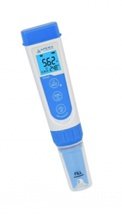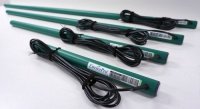Frequently Asked Questions: pH Testers

pH testers are among the most popular pieces of scientific equipment and have innumerable uses, from testing soil pH in home gardens to complex laboratory research.
This article answers seven of the most commonly asked questions about pH testers to help you make accurate, informed pH measurements.
1. Why Do I Need to Calibrate My pH Tester?
Over time the measuring characteristics of pH testers can shift. Calibration allows the meter to make corrections for these changes and keep the readings accurate.
2. How Often Should I Calibrate a pH Tester?
This question can be like, "how long is a piece of string?". Calibration frequency depends on two things:
-
- Your required measurement accuracy; and
- How often the pH tester is used.
It is considered Best Practice to calibrate your meter for the most accurate reading possible before each use. Practically, and as a general rule, our scientists recommend calibrating your meter daily if you use it every day. However, weekly calibration would be more appropriate if you use your pH tester a few times a week.
3. What Do I Need to Perform pH Calibration?
-
- Your pH meter
- At least one buffer solution. However, our scientists recommend a minimum of two that shoulder your expected measurement range
- A clean beaker or cup; and
- Deionised water for rinsing the pH tester's electrode before and after calibration.
4. How Do I Store a pH Tester?
Keep the electrode's glass bulb hydrated to ensure a longer life and more stable measurements from your pH tester. Keeping the electrode hydrated is as simple as soaking it in electrode storage solution when not in use.
Storage in electrode solution is dual purpose as it both helps keep the bulb hydrated and minimises leakage from the internal electrolyte solution. Note: If you do not have any storage solution, you can use a few drops of pH 4 calibration buffer solution in the interim. Never store your pH electrode in distilled or deionised water.
5. How Do I Clean a pH Tester?
For most water testing applications, rinsing with distilled or deionised water between use will suffice. However, when the electrode is particularly soiled, or a coating of grime appears, you will need an electrode cleaning solution. Browse electrode cleaning solution solutions here.
6. Why Can't I Wipe Down a pH Electrode?
Wiping the pH electrode's glass can produce a static charge that will potentially interfere with the electrode's pH reading. To clean and remove excess water, rinse your electrode in distilled or deionised water and blot excess moisture away with a lint-free cloth. Avoid direct contact with the glass.
7. What Is Temperature Compensation?
The pH value of a solution is temperature-dependent. As a result, pH readings should compensate for the temperature to standardise the readings - pH meters will feature either:
-
- No temperature compensation
- Manual temperature compensation (MTC); or
- Automatic temperature compensation (ATC).
Manual temperature compensation is achieved by entering the temperature of the sample being measured into the tester. The tester will then display a pH reading that is temperature compensated.
pH testers with automatic temperature compensation have an inbuilt temperature sensor that constantly sends a compensated pH signal to the display. Automatic temperature compensation helps measure pH in samples with wide temperature variations.
Conclusion
Understanding the basics of pH testers will ensure you are taking accurate and reliable measurements – no matter the application.
Have you got a burning question about pH testers? Speak with an Instrument Choice Scientist! Call 1300 737 871 or email [email protected].
Also interesting
The Instrument Choice Team of Scientists regularly reviews new and popular products, so you can make more informed decisions when searching for the perfect scientific instrument for your application.
This edition assesses the Vortex-Genie 2 Vortex Mixer, a variable speed shaker, mixer and vortexer suitable for everyday laboratory use.
Get our scientists review of the Vortex-Genie 2 Vortex Mixer

The Instrument Choice Team of Scientists regularly reviews new and popular products, so you can make more informed decisions when searching for the perfect scientific instrument for your application.
This edition reviews the series of Enviropro soil moisture, temperature and salinity sensors—a must-have series of precision sub-surface soil probes for any farmer or researcher demanding reliable and repeatable measurements.
Get our scientists’ review of the Enviropro Soil Probe Sensors


